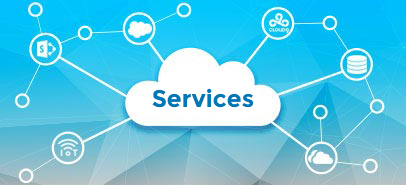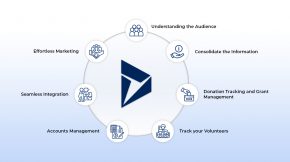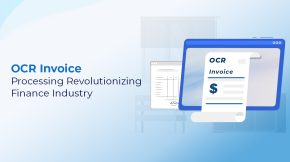Navigating the T-Junction: Your Modern Microsoft Dynamics NAV Support Strategy
For more than two decades, Microsoft Dynamics NAV has been silently providing the backbone for the ambitions of small and medium businesses globally. It’s the workhorse behind providing mundane finance work, supply chain, and customer relations. It’s a system trusted and customized to such an extent that it often feels less like software and more like a colleague.
Yet, technology waits for no one. The very flexibility that positioned NAV as a champion can become a hindrance in an era of cloud agility, real-time analytics, and intelligent automation.
An unsupported, outdated system used to be merely a concern for IT. Nowadays, it is a serious business risk, slowly eating away at one’s competitiveness. You’re caught between the two: the promise of the new and the comfort in the known. You know Microsoft Dynamics 365 Business Central is the future: future of seamless integration, unmatched accessibility, and AI-powered insights-but somehow the road ahead looks very complicated.
That’s your navigational guide: examining why companies stay with NAV, and the real risks of keeping it that way, and options you actually have to consider in choosing your Microsoft Dynamics NAV support services partner for this critical phase of your journey. We don’t want to sell you on a product; our goal is to help you bring clarity to your strategy.
Looking Back Fondly: Why Was Dynamics NAV So Biennial?
Before looking ahead, it’s crucial to acknowledge the deep legacy that NAV holds, for more than just: it was more than an ERP-it was a flexible platform that businesses could mold.
- Financial Management: It brought order to chaos, streamlining complex accounting, cash flow management, and financial reporting into a coherent system.
- Supply Chain Management: It offered visibility-too much in the top level-inventory control, purchasing, and vendor management.
- Deep Customization: Here lay the secret sauce. It could be customized to an almost obsessive level to adjust for unusual industry practices or peculiarities of individual companies that simply exemplified them in digital form.
Deep customization is the reason many companies are still using it today. Thus, it is also what hinders them in taking the next step, i.e. how does one replicate years and years of finetuning in a new system?
The Comfort Zone: Why Are Companies Still on Microsoft Dynamics NAV?
Knowing the “why” is key to designing the “what’s next.” The decision to stay with NAV is rarely about stubbornness; it’s about pragmatic, real-world concerns.
Understanding the Hesitation: Why Change Persuades So Strongly.
We totally understand how the thought of switching from Dynamics NAV can be very overwhelming. This is more than just a Cloud-based ERP platform, the business process flows of ordinary operations depends upon it. Let’s delve into those very real issues in your mind.
1. The Comfort of Familiarity: “The Devil You Know”
Your team has built from the ground up a good few years of valuable institutional knowledge around NAV and its specific interface and processes. It is a system the workers practically fly through blindfolded. The prospect of a switch is not just about learning a few new buttons; it is about fearing either a steep learning curve or operational interruptions during the transition, or both. This fear is a huge one concerning downtime and lost productivity, which is why having a strong Microsoft Dynamics NAV partner to lean on is so important.
2. The Customization Conundrum: Protect Your Investment
This is, by far, one of the biggest issues. Your NAV system is not an out-of-the-box one; it has been custom-tailored to fit your business like a glove. Most probably, you’ve invested a great amount of time and resources into custom codes and modifications that make it work just perfectly for you. The whole idea of porting these over—or worse, losing them—is a totally legit fear: it feels like a major financial and operational risk. Solving this particular conundrum is also a core specialty of Microsoft Dynamics NAV support services.
3. The Real Cost of Switching: Beyond the Sticker Price
When management decides about putting money into something newer, they look at the sticker price of the new software licenses first and foremost. It is the hidden costs that inspire the biggest concern: the implementation consultants’ fees for helping with the upgrade, the trouble involved in migrating all your data, the investment required to train every single member of staff, and the cost of downtime while the final switch is underway. This is where the trusted partner can step in with the plan that guarantees the predictability of cost and an easy-to-follow schedule.
4. The Integration Web: Untangling a Complex Ecosystem
Let’s be honest here: your NAV system probably does not operate solo. It is the hub of an enormous wheel that is interoperable with several other systems—be it legacy software , third-party applications, or proprietary solutions you developed internally. The technical issue of attempting to refashion into a Cloud platform seems huge. It’s quite a tricky puzzle, and that thought alone can be overwhelming. This is where deep technical knowledge, as offered by a dedicated Microsoft Dynamics NAV support team, comes in handy for enabling a smooth transition.
Those concerns are legitimate. They discuss investments of time and money, trust, and stability. Exactly why expert support for Microsoft Dynamics NAV is not just a technical must but a business necessity.
The Growing Shadow: Risks of Staying on an Unsupported Path in NAV
The safety of staying is a mirage, and the realities imposed by Microsoft Dynamics NAV support lifecycle cannot be ignored. As versions such as NAV 2013, 2015, and even 2018 slip out of their mainstream support phases, the degree of risk cuts sharply from speculative to critical. Knowledge of the Microsoft Dynamics NAV support lifecycle lays the foundation for proactive risk management. Not acting upon it is a gamble that no modern-day organization can afford to take.
Security Vulnerabilities: This threat is the most immediate of all. Lack of security patches from Microsoft means the criminals can enter those windows through your ERP system. The one-time cost of a data breach can be catastrophic, and so can its impact on reputation.
Compliance Hazards: The regulatory environment, whether it be GDPR, SOX, or an evolving tax law, is constantly changing. An unsupported system can never keep up with these changes, leaving you exposed to noncompliance, fines from audits, and potential lawsuits.
Rising Maintenance Costs: The aging system breaks down more frequently. Recruitment of talent in an obsolete technology becomes scarcer and more expensive. Your IT budget migrates from innovation to life support that is costly.
Functional Stagnation: You miss out on modern innovation. Power BI real-time dashboards, automatic workflows in Microsoft Power Platform, or collaboration in Teams for example. Your competitors are harnessing these; without them, you are at an extreme disadvantage.
Talent Drain: The new generation of workers expects modern and intuitive tools. Old software can prove a roadblock to recruitment and frustrate their employees who know better ways to work exist.
Mapping Your Way: A Guidebook to Your Microsoft Dynamics NAV Support Options
The good news-the options still exist for you. The road forward is not a single road; it is rather a continuum of possibilities. The right Microsoft Dynamics NAV customer support partner will help you evaluate them against your business goals, budget, and IT strategy.
Option 1. Prolong and Protect
If a full-scale migration is not an option immediately, you may do something to corral the safe, longer life of your NAV system.
- Extended Support: The organizations of yours will be entitled to get critical security updates through a paid program that Microsoft provides for some versions.
- Third-party support: You may imputes to Microsoft Dynamics NAV support services to fill that gap. We give you the advantage of security monitoring, performance tuning, and maintenance of your custom environment so that you can take some time away to contemplate going forward.
Option 2. Modernize and Grow with Business Central
For almost every company, that should be the strategic end.
Going on to Dynamics 365 Business Central is more of a change than just a software upgrade.
- Go Cloud: Low IT overhead and anywhere access, along with automatic, hassle-free updates directly from Microsoft.
Enable Integration: Work effortlessly with the Microsoft 365 applications you are already using. Analyze data via Excel and Power BI, interact with clients through Outlook, and coordinate in Teams…all from within your ERP solution.
- Deliver Intelligent Insight: Move beyond reactive reporting to predictive forecasting with AI embedded in your solution to automate tasks and deliver insights you might have missed.
- Modern User Experience: Empower your employees with an intelligent and role-based interface that takes less time to train and more time to boost productivity.
A smart partner does not just perform a migration technically; they help you rethink processes to make the most of this new platform.
Why Beyond Key Is Your Preferred Guide for Microsoft Dynamics NAV Support
At Beyond Key, we understand that this transition is more than just a technical job-it is business transformation. In that capacity, we are not merchant vendors; instead, we are your navigation strategic partners. Our way of doing things is different because we listen first. We really take time to get inside the unique customizations you depend on, the pain points that you experience, and the goals that you want held for your business.
Our Proven Services Include:
Decades of experience, a people-first philosophy, and commitment to your long-term success describe us. We believe technology should be empowering for your people, not limiting them.
- Strategic Assessment & Roadmapping: We provide an unbiased and clear-eyed view of your current ERP with a detailed roadmap for your future, whether this is extending Microsoft Dynamics NAV support or moving toward Business Central.
- Seamless Migration & Modernization: Our team of technical experts specializes in upgrading complex Microsoft NAV to Business Central. We handle every aspect of data migration with extreme care whilst taking care of the custom code ensuring there is almost no disruption to your business.
- Ongoing Managed Support: We provide a security blanket for companies wishing to stay on NAV through our Microsoft Dynamics NAV support services. Our support services monitor proactively, troubleshoot, maintain, and keep your system safe from harm.
- Customization & Development: Whether working with your existing NAV system to optimize that or providing new, more powerful Business Central extensions, our development team ensures your ERP remains the perfect fit for your business.
Your NAV-related Questions answered.
Q: What exactly is the Microsoft Dynamics NAV support lifecycle?
A: Beginning with Microsoft’s lifecycle policy generally defines a period of 5 years for Mainstream Support (which means supporting new features and functional fixes) and additional 5 years for Extended supporting critical security updates only). For most of the older versions of NAV, Mainstream Support has ended, which now puts the overhead of securing on the user.
Q: We have highly customized NAV. Can we even move to Business Central?
A: Yes, indeed. This is a very normal and valid concern. A specialist partner like Beyond Key focus precisely on scenarios like these. We analyze your customizations thoroughly, understand which customizations are needed and rebuild them with modern supported ways in Business Central. Instead of Losing your unique functionality, this is now an opportunity to refine and improve it.
Q: Is this a project we can manage internally?
A: Internal IT teams will always play an important role in this, but given the size and specialty, this is probably an area where an experienced hand really does pay off. Beyond Key have dedicated ERP teams who’ve executed dozens of NAV upgrades and support scenarios.
Your Next Step towards Cloud adoption: A Conversation, Not a Commitment
We believe your path to the cloud should be a carefully mapped journey, not a blind jump. It can be an evolution that has been carefully mapped out. The first step is the simplest: the first conversation. At Beyond Key, we are listening to you, willing to understand your challenges, and provide clear, expert insights on your Microsoft Dynamics NAV support options. We want to help you turn this crossroads into an advantage that will blow away.
Contact us today for a no-obligation consultation. Let’s conceptualize your ERP migration strategy that ensures your business process remain secure, efficient, and ready for the future.












